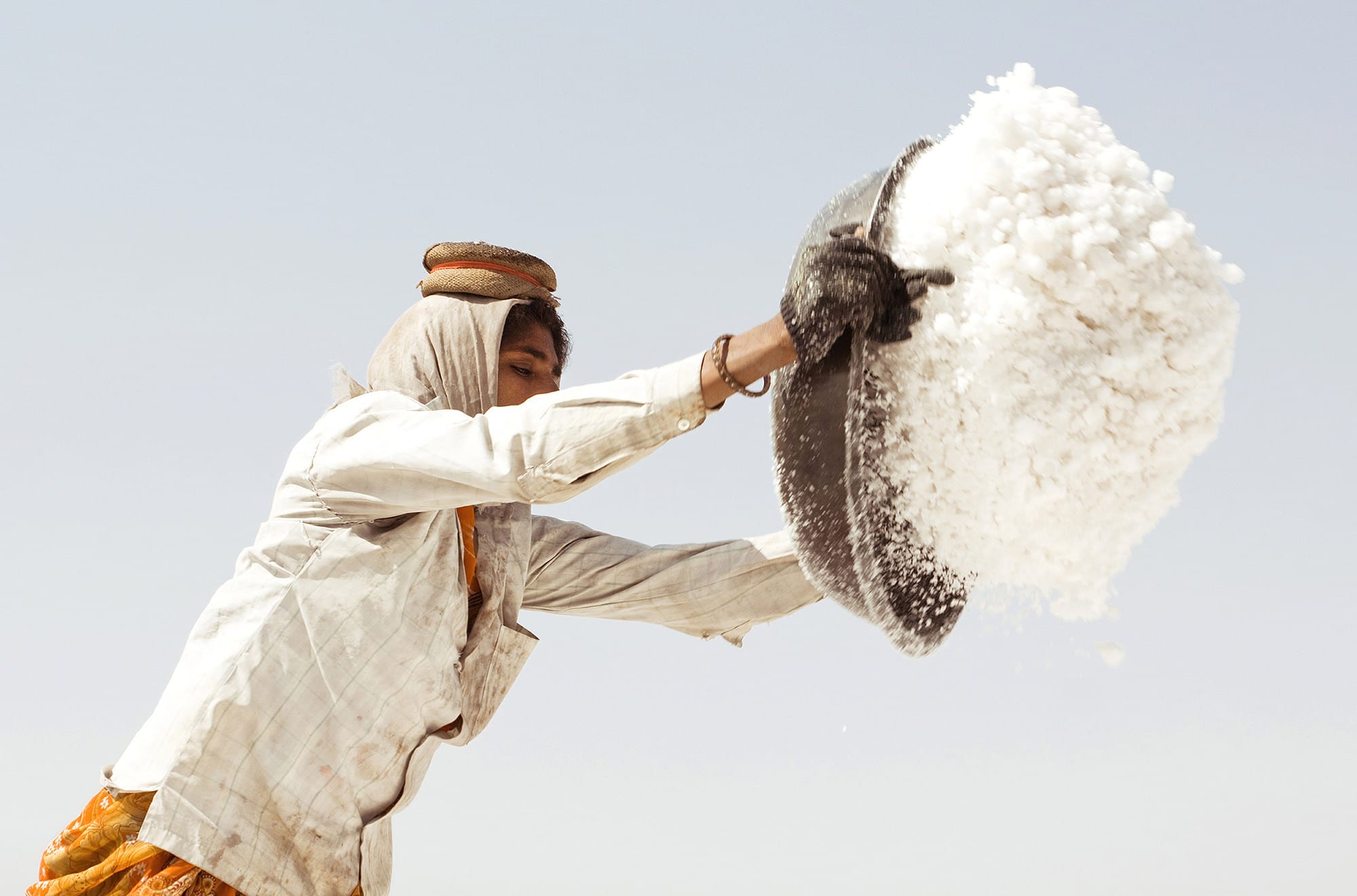We sprinkle it on our chips and throw it over our shoulder without thinking much about where it came from. However, the harvesting of salt can be a serious and often dangerous task. Salt is all around us. Underground and on the earth’s surface in the dried up residues of ancient seas. Some salt has even arrived from outer space in meteors. Harvesting of salt is often done through mining, but – depending on the climate and circumstances- can also be retrieved through solar evaporation in areas with low rainfall and lots of sun.
In a place called Little Ran of Kutch, in the Indian province of Gujarat, the members of the Koli tribe have been taking care of 30% of India’s salt production though manual labour for many centuries. The indigenous method of salt work is made possible by India’s yearly monsoons, which temporarily flood the desert floors with water from the Arabian Sea. When the water hits the 50 degree mark, the salt recedes into cracks in the ground. The water is then pumped out of the ground and into saltpans, where it evaporates and turns into large crystals. The so called saltpan workers, or ‘Agariyas’ in Indian, then harvest the crystals by hand and load them unto trucks. A full pan weighs about 20kg, which is caried by both men, women and children alike. Stretching out over 5.000m2 The Little Ran is a vast piece of land and with saltpans spread out over this large area, commuting takes a lot of time. With the sun soaring on their skin, the Koli people receive only 1.000 litres per household for a period of 15 days, which is barely enough to stay hydrated and cook for a family of 9, which is not uncommon. However, with approximately 100.000 Agariyas temporarily moving to the Little Ran of Kutch every year, there simply isn’t more water around to provide for everyone. Ultimately, this results in sanitation and hygiene being compromised. Some go to the nearest village to bath, which is 8 kilometres away.
Needless to say, the sea and sun take a large toll on the saltpanworkers’ health. Their legs become abnormally thin and stiff because of standing in the salt pans for decades on end, they are usually malnourished and the bright sun not rarely causes blindness. Despite all this, many travellers who met the Koli describe them as high spirited and very friendly, working together to make a living for their people. Evenmore so, they are proud of maintaining this age old and traditional lifestyle, even if it means they will never get an education or travel outside of the region.
The Koli are a Denotified tribe, which means they have no rights to their own land and thus salt farming is the only means for them to create an income, and their only skill. Therefor, local NGO’s are attempting to secure user rights to their traditional salt farming and donate rubber boots for them to maintain their work in better conditions. Paradoxically, the biggest threat to the Agariyas’ livelihood within the Little Ran salt industry, is not the sun and sea, but its wildlife. Little Ran of Kutch has been declared a wildlife sanctuary for the nearly extinct Indian Wild Ass (khur), jackals, wild foxes, desert wolves, antelopes and many native and migratory birds and a worldheritage site by UNESCO. The saltpans are said to destroy its biodiversity, so salt production in the Little Rann is a double edged sword. Furthermore, receding groundwater levels, combined with debt, diminishing market values as well as a lack of governmental support, are raising questions as to the value of maintaining such an industry in this part of the world. However, the ban of it, would put the lives of over 100.000 people and their 400 year-old tradition in immediate danger.
In 2006 the salt workers recieved eviction notices, but the Agariyas argue that they have been here for centuries, and are vulnerable without any land deeds. On top of this, since the designation of the wild ass sanctuary in 1972, the population of wild asses has risen from a meagre 362 till over 4,000 individuals.
Photo by Burnett Gavin

